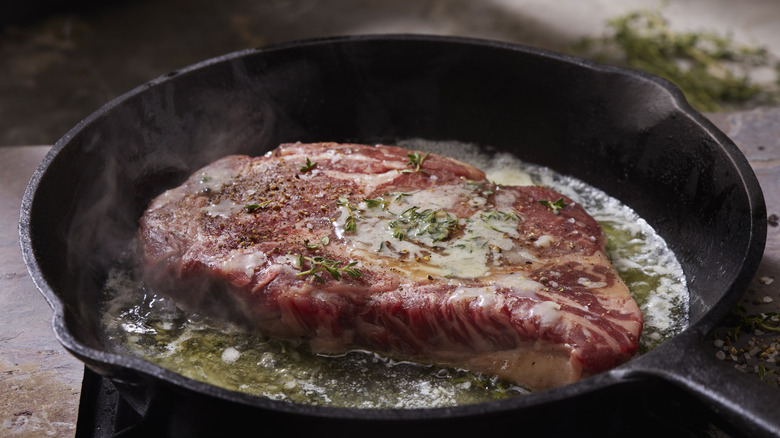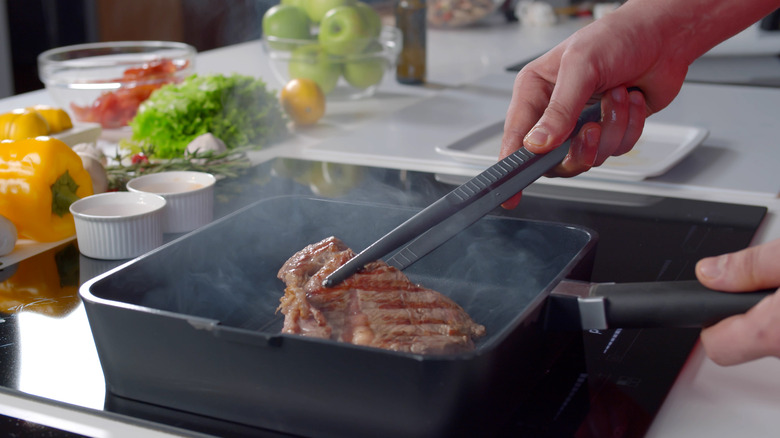The Best Way To Prevent Steak From Sticking In The Pan
It's the biggest kitchen disappointment: You're searing a nice steak and you go to flip it — only to find it's stuck to the pan. Besides pulling layers off your potentially expensive beef, the stuck-on bits can also burn and infuse the cooking oil with a bitter, acrid taste.
Luckily, there's a simple way to avoid sticky steaks: Make sure your pan is hot enough before you lay the food onto its surface. If your pan has reached the right temperature, the meat will stay loose and naturally release once it's developed a gorgeous, caramelized crust.
Admittedly, this heat control is a delicate balance that requires practice to achieve. To cook a perfect steak that doesn't stick, heat neutral oil till it's shimmery — but not too smoky. Overheating an oil past its smoke point causes its chemical structure to break down and release charged ions called free radicals, which both taste bad and have negative health impacts. Chef Gordon Ramsay's steak recipe, for example, calls for heating the oil for 45 seconds; holding your hand an inch above the pan should be intolerable.
The scientific reasons why a hot pan is necessary
To stop your steaks from sticking and sabotaging your dinner, it's important to understand the materials that comprise pans' surfaces. Nonstick pans are coated with substances like Teflon, which reduces friction. This explains why your nonstick pans begin to stick when the coating gets scratched off and reveals the metal underneath. Standard pans consist of a heat-conducting core and a protective exterior. But when this metal coating heats up, it expands and reveals tiny cracks; in this excited state, proteins in the meat can form strong bonds with metal molecules in the pan.
@testkitchen If you follow these 4 tips, you'll find that any skillet can produce tear-free results. #steak #howto #foodscience #testkitchen #meat #pansear #pansearedsteak #kitchenhacks
So if some heat facilitates sticking, why does more heat prevent it from sticking? Stainless steel pans become non-stick through a scientific principle called the Leidenfrost effect, which creates a thin layer of vapor between moisture and hot metal. When protein comes into contact with a ripping hot pan, any fat instantly melts and moisture from the food becomes steam, blocking chemical bonds from forming while still allowing heat to transfer.
To know if your pan is hot enough to prevent sticking, test the Leidenfrost effect. Before adding oil, splash a drop of water onto the pan. If it starts careening around the pan like a pinball, you're observing the effect. But if the droplet sizzles in place, your pan isn't hot enough — and things could get sticky.

